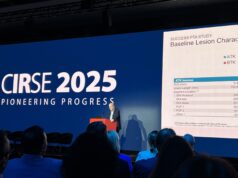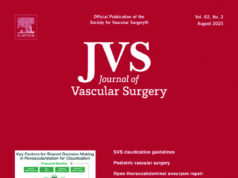 BD has announced the enrolment of the first patient in the XTRACT registry, a prospective, multicentre, single-arm, postmarket registry study designed to evaluate the real-world performance of the Rotarex catheter system in the treatment of patients with peripheral arterial disease (PAD) lesions.
BD has announced the enrolment of the first patient in the XTRACT registry, a prospective, multicentre, single-arm, postmarket registry study designed to evaluate the real-world performance of the Rotarex catheter system in the treatment of patients with peripheral arterial disease (PAD) lesions.
The XTRACT registry is being led in partnership with co-principal investigators Prakash Krishnan (The Mount Sinai Hospital, New York, USA), an interventional cardiologist, and Todd Berland (NYU Langone Health, New York, USA), a vascular surgeon. The first patient was enrolled on 29 September 2025, under the care of vascular surgeon Kousta Foteh (Vital Heart & Vein, Humble, USA). With patient participation, BD notes that the XTRACT registry will now collect data to inform clinical decision-making and optimise treatment strategies for PAD.
“We are proud to be the first site to enrol a patient in the XTRACT registry,” said Foteh. “This registry will provide critical real-world evidence on the Rotarex catheter system and help physicians refine treatment strategies to improve outcomes for patients with PAD. This first case is similar to what we commonly see in our clinic, where an artery is more than 70% occluded. The versatile Rotarex catheter removed the debilitating plaque via pedal approach, delivering a favourable result for this patient.”
The XTRACT registry is expected to enrol up to 600 patients in as many as 100 clinical sites in the USA. Patients will undergo follow-up evaluations at 30 days, six months, and 12 months post-procedure to assess both safety and effectiveness of the Rotarex catheter system in everyday clinical practice.
BD notes that the Rotarex catheter system is designed to efficiently remove both plaque and thrombus by using three distinct mechanisms of action, making it an effective treatment for various PAD lesions in peripheral arteries. The company press release reads: “Offering dual functionality as both an atherectomy and thrombectomy device, the rotating atraumatic catheter head with blunt facets modifies and detaches mixed morphology lesions. Additional luminal gain is achieved by a vortex created around the rotating cylinder. The rotating internal helix creates continuous negative pressure at the tip, actively aspirating and transporting material away.”













